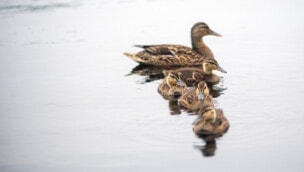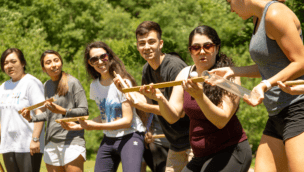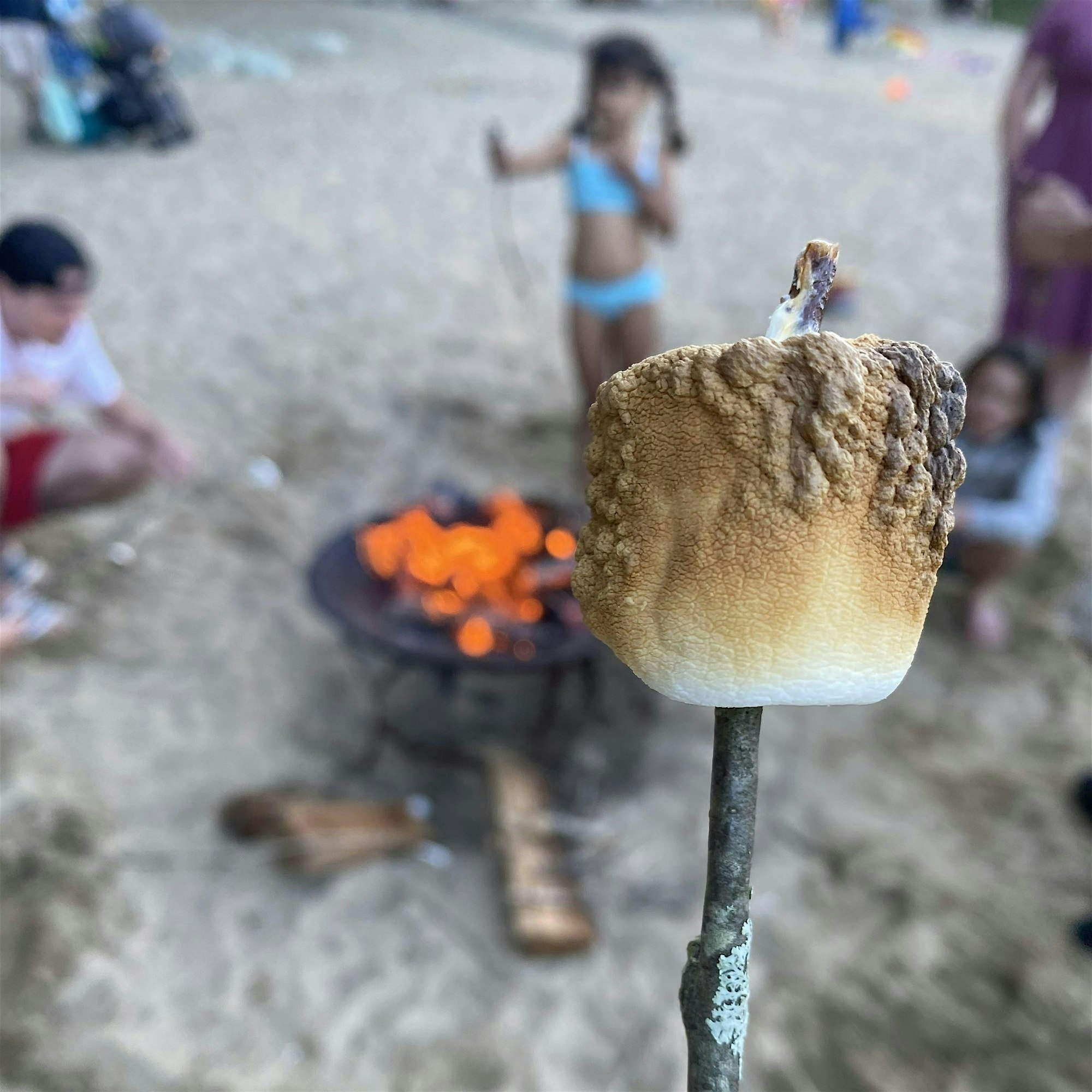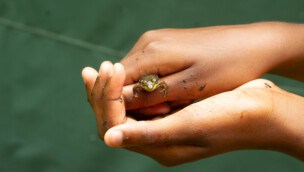Hooked on Nature: A Beginner’s Guide to Baiting a Fishhook
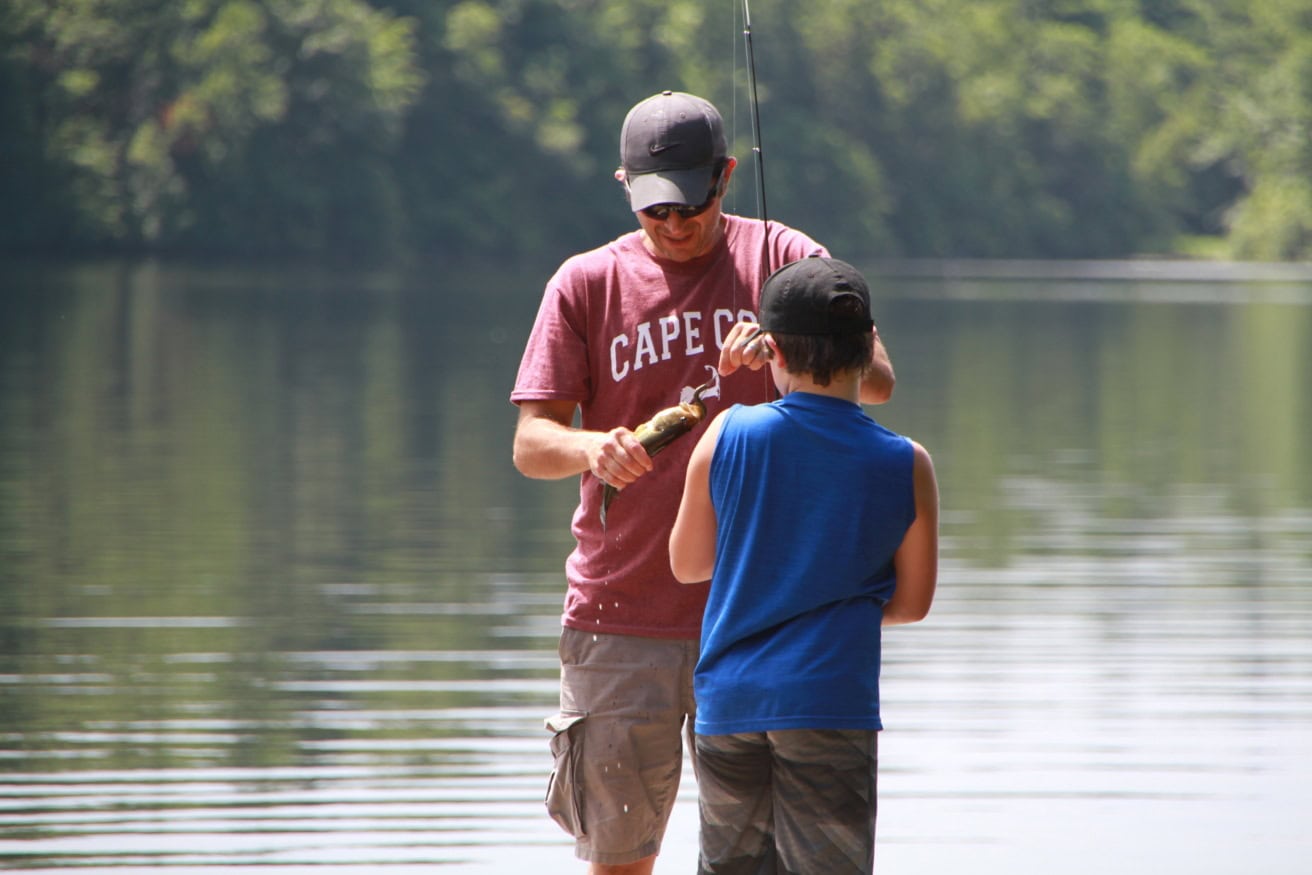
There’s something timeless about standing on the edge of Noanet Pond, fishing rod in hand, surrounded by trees, sky, and the occasional ripple of water. Fishing is more than just an activity; it’s a chance to slow down, tune in, and connect with the natural world. Whether it’s your first time casting a line or you’re an established angler, it all starts with one simple step: baiting the hook.
It may sound straightforward, but this small act is rich with learning. What kind of bait should you use? How do you handle it? How do you set it up in a way that’s respectful to the fish and effective for a catch? Let’s walk through it together.
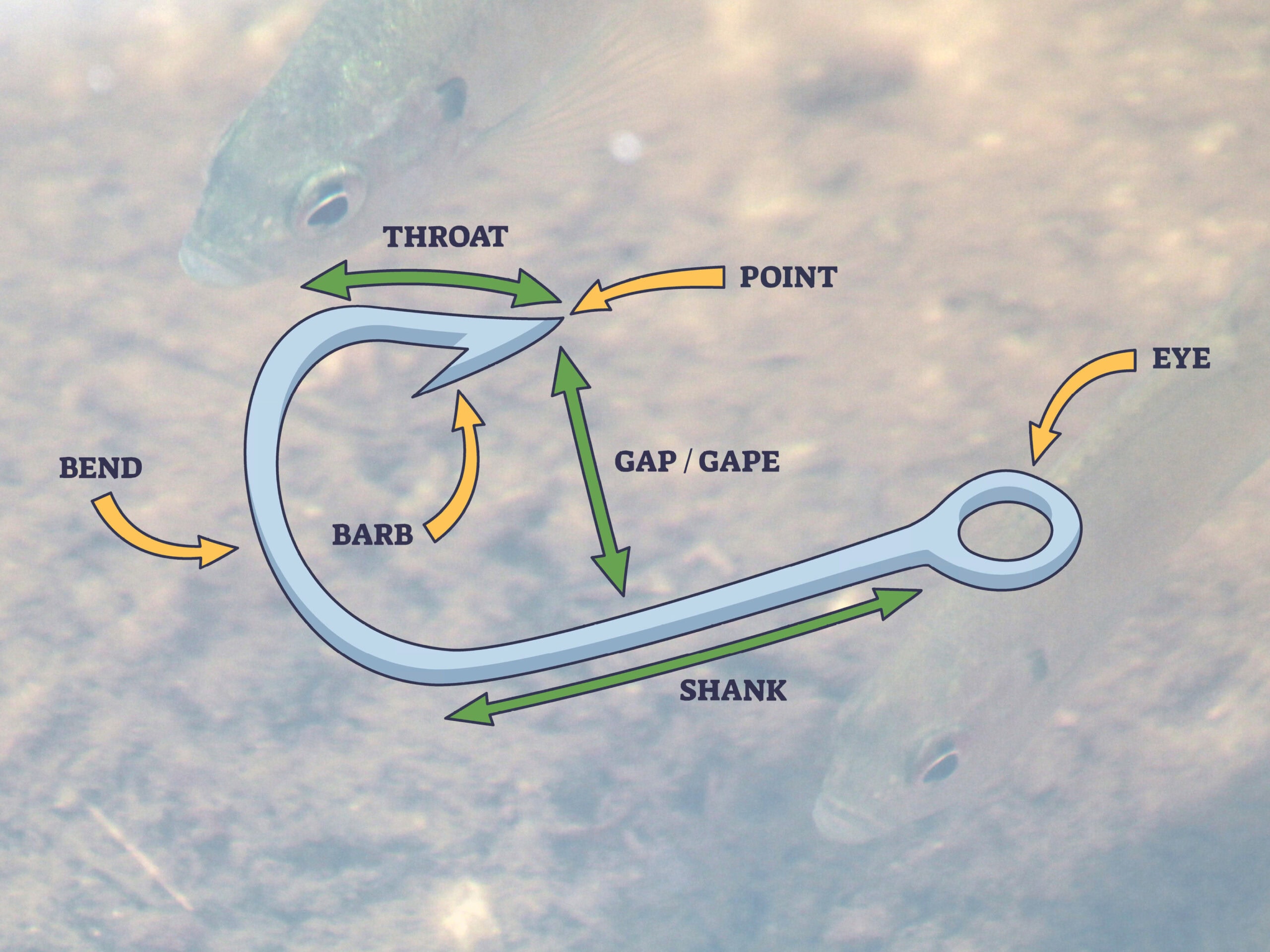
Hook Anatomy
A hook may be small, but this seemingly simple tool has several parts, and each one serves a purpose.
In Hale programs, we often remove barbs — this can make it harder to catch a fish, but it makes it easier to unhook the fish once you do. And since we encourage catch-and-release, that makes it less likely you’ll injure the fish before returning it to the pond! You can clip the barb with a pair of wire cutters, which are handy tool to keep in your tackle box.
After you remove the barb, tie your line to the eye of the hook. There are many ways to do this! The Palomar Knot is a popular option, especially for beginners.
Choosing the Right Bait
When it comes to bait, there’s no “right” choice, but some options work better than others depending on where you’re fishing. We recommend live bait, like worms or minnows, which mimic the fish’s natural food and can increase your chances of a bite. You can find worms in the soil nearby (kids love digging for them!) or purchase them from a local bait shop.
Not into handling live critters? That’s okay. Artificial bait, like rubber worms, dough baits, or corn kernels, can also do the trick, especially for sunfish or bass. Just keep in mind that natural bait tends to work better in quiet, tree-lined ponds.
Baiting the Hook
If you’re using a worm, thread it onto the hook so that it covers most of the metal (the curved part is known as the bend; the back of the hook is the shank). Leave just a small bit of the point exposed. This keeps the hook hidden and helps the worm wiggle naturally in the water, making it more appealing to passing fish.
If you’re using a minnow, the goal is to hook it in a way that keeps it alive and swimming, either through the lips or just behind the dorsal fin. It takes a light touch and a little courage, but this is part of the outdoor learning experience.
Casting with Care
Once your hook is baited, it’s time to cast. Make sure the bait is secure, especially if you’re using something soft that could fall off with a strong flick of the rod. If needed, you can gently wrap a bit of fishing thread or bait elastic around it to keep it in place.
As you cast, watch the water. Look for movement. Be patient. Fishing isn’t about speed; it’s about focus, awareness, and quiet anticipation.
When You Feel a Tug
When you feel a bite, resist the urge to yank immediately. Give it a second. Let the fish fully take the bait. When the line goes taut, flick the fishing rod in a quick upward motion and set the hook. If you’re lucky, you’ll reel in a sunfish or bass, and if not, you’ll still have a story to tell.
Quickly return your catch to the water unless you’re keeping a few fish (we discourage this, but you’re allowed two trout and two bass per person at Hale). It’s a great chance to teach young anglers about responsibility and conservation: handle fish gently, get your photo, and return them safely to their habitat.
Final Thoughts
Baiting a hook isn’t just a technical skill. It’s an invitation to observe and engage with the natural world in a meaningful, hands-on way. It’s also a wonderful opportunity to teach a survival skill: from parent to child, counselor to camper, and neighbor to friend.
So, the next time you visit Hale, grab a pole, head to the water, and give it a try. You might not catch the biggest fish, but you just might find a new favorite hobby.
Want to try fishing at Hale? Learn more about our fishing policies and how to access our trails and ponds at hale.education/visit. During summer, South Beach is one of many popular spots with easy parking and boat access.



